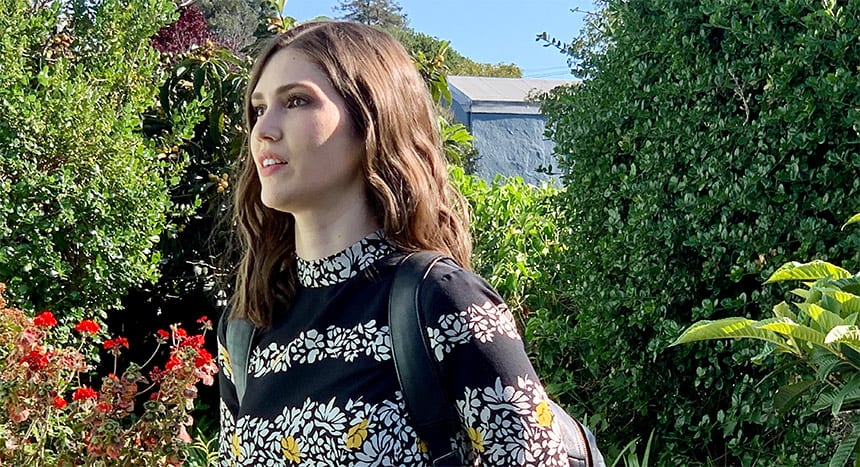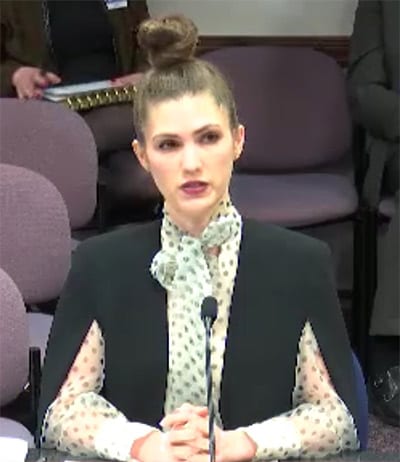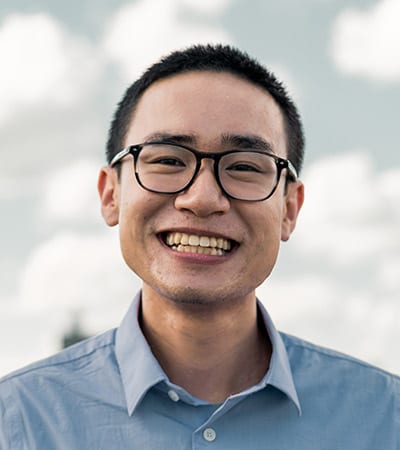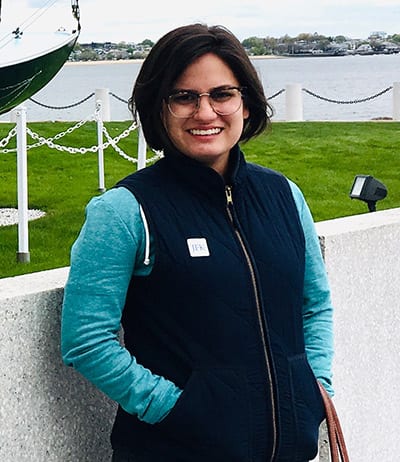
By Andrew Cohen
The road to policy reform is often filled with detours and delays, hurdles and heartbreak. That reality makes what Savannah Reid ’20 accomplished at Berkeley Law all the more astounding.
Winner of the school’s annual Sax Prize for Clinical Advocacy, Reid distinguished herself through her tenacity, teamwork, and extraordinary results in four semesters with the Policy Advocacy Clinic (PAC) and two with the Death Penalty Clinic.
“It is very unusual and impressive for a law student to produce this kind of success in such a short time,” says Professor and PAC Faculty Director Jeffrey Selbin. “Savannah is as smart, productive, and collaborative as any student we’ve ever taught.”

Named for the late Brian Sax ’69, a respected San Francisco litigator and Berkeley Law lecturer, the prize honors a graduating legal clinic student who displays excellence in advocacy and professional judgment. Bill Nguyen ’20 received the Sax Prize Honorable Mention award, and Camila Gonzalez ’20 the Clinical Legal Education Association’s Outstanding Clinical Student Award.
Reid worked to abolish state laws that authorize courts to impose fees on families with youth in the juvenile system, which disproportionately harm low-income youth and families of color. Her shining achievement: initiating and advancing a strategic campaign that abolished juvenile fees in her home state of Nevada—with unanimous bipartisan support in the state’s legislature.
“This experience not only exposed me to the complicated inner workings of the legislative and policy-making processes, but more importantly, to the various ways in which racist and discriminatory practices are upheld and justified,” she says.
Reid helped keep the bill from being stripped of key provisions and engaged in complex negotiations about technical amendments. She teamed with fellow Nevadan Dagen Downard ’20 to conduct in-depth statutory research and analysis, draft repeal legislation, and provide expert testimony to multiple commissions and legislative committees on behalf of PAC’s Nevada client.
“Even after sharing our data with local decision-makers, the practice continued to be justified by some on the basis that fees would ‘hold youth accountable,’” says Reid, who plans to become a public defender after clerking for Chief Judge Miranda Du of the District of Nevada. “These justifications were clearly intended to maintain a system built on the oppression of communities of color and were yet another reminder of the necessity of ending debtor’s prisons.”
At the Death Penalty Clinic, Reid helped lead a six-student team representing a client in Alabama and spent four days there interviewing witnesses. She developed a plan to reach out to sensitive witnesses, drafted portions of an appellate brief, and helped craft the media strategy for the case.
“Savannah recognizes the limits of the law as a tool for social justice, but she is not content just to accept them,” Professor Ty Alper says. “She pushes her colleagues to think beyond those limitations and asks us constantly how we can expand them or break them down.”
Expanding the boundaries
Nguyen pushed the limits of legal advocacy at the Death Penalty Clinic and the East Bay Community Law Center’s Youth Defender Clinic. The collaborative nature of his work, and the commitment of his fellow clinical students, provided constant fuel.

“With them I found myself asking, ‘What can I do for my client apart from just writing this motion and arguing in court? How can I make space for this person and their family to speak for themselves? What types of social services might this person benefit from during and after their delinquency case?’” he says. “It was inspiring to see my teammates rise to the occasion in creative, extralegal ways.”
Throughout his 3L year, Nguyen worked with a team of students and lawyers representing a death-sentenced prisoner in Alabama. Death Penalty Clinic Supervising Attorney Mridula Raman praises his command of complex legal concepts and artistry in developing a narrative.
During a mock jury selection exercise in the clinic seminar, Nguyen noted that a potential juror’s interest in American Idol was relevant “because many viewers are invested in the contestants’ backstories, and we want jurors who will be invested in our client’s mitigation story,” Raman recalls. “Even many experienced practitioners wouldn’t have made that connection.”
As a 2L at the Youth Defender Clinic, Nguyen became a regular on the juvenile court calendar and drafted, argued, and won original motions in two of his three cases. He will become an Alameda County public defender this fall, a path motivated by his father’s background.
Conscripted as a high school student by the South Vietnamese army in 1971, Nguyen’s father was imprisoned in a reeducation camp for nearly six years after Saigon fell in 1975. The family immigrated to the U.S. in 1992.
“Just learning that my dad had been in prison must have been the first time I’d thought about the cost of locking people away,” says Nguyen, who in college studied mass incarceration in the U.S. and transitional justice in other nations.
Translating forms, phone calls, and social workers for his parents, he adds, “made the difference between being dismissed and being understood” and helped him secure social services for his family and scholarships to fund his education.
“Providing the benefit of translation is the basic task of a public defender,” Nguyen says. “How do I make my client’s life legible to jurors, judges, and prosecutors? How do I push the bookends of the criminal-legal narrative beyond the first and last words of a police report?”
Enriching her environment
Gonzalez made an indelible imprint at the Environmental Law Clinic across three semesters, demonstrating what Director Claudia Polsky ’96 calls “extraordinary and multi-dimensional competence.”

She participated in federal court litigation regarding the U.S. Environmental Protection Agency’s plan for oil spill response, which the clinic asserts is outdated and puts coastal communities and first responders at great health risk by relying heavily on toxic chemicals.
In her first semester, Gonzalez drafted a jurisdiction memo, much of the clinic’s Notice of Intent to Sue letter, and its complaint. She also managed negotiations with the EPA regarding a Freedom of Information Act request, participated in an intensive media strategy, and helped recruit additional case plaintiffs.
Former Environmental Law Clinic teaching fellow Purba Mukerjee says Gonzalez “is without a doubt the top student I’ve supervised in my time as a fellow in this clinic—she is a top performer in every sphere, from legal research, writing, and analysis to professionalism to teamwork.”
Gonzalez, who will join the firm WilmerHale in Washington, D.C. this fall to focus on administrative law, says her “favorite part has been developing relationships with our clients and telling their stories.”
The list includes Gulf Coast fisher Kindra Arnesen. Arnesen and her family have suffered long-term health impacts—body sores, breathing troubles, seizures, and more—related to their exposure to Corexit, which was applied to Gulf waters after the 2010 BP Deepwater Horizon oil spill.
The spill decimated her family’s livelihood, and Aresen doesn’t always have phone or internet access. Nevertheless, Gonzalez conducted several interviews with her to learn about her life, family, and reasons for wanting to reform the EPA’s oil spill response plan.
“It was an honor that Kindra let me into her life and allowed me to tell her story,” Gonzalez said.
Polsky admires how Gonzalez “has been incredibly mindful of our client’s challenging personal context, and has interacted with her thoughtfully and sensitively … She wrote a superb declaration for our use in court.”